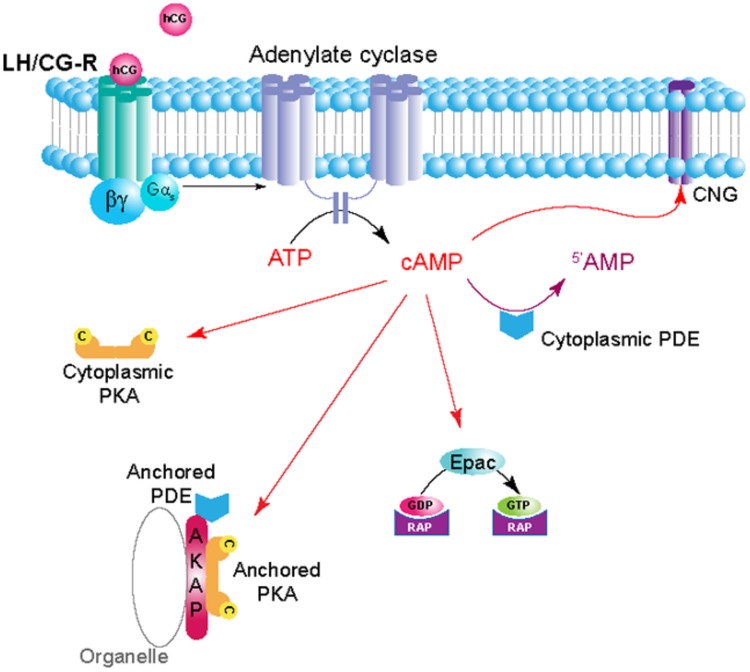FIGURE 2.
Schematic depiction of hCG/cAMP signaling pathway in trophoblasts. Ligand (hCG) binding to the LH/CG-R receptor (LH/CG-R), a G protein-coupled receptor (GPCR), activates adenylyl cyclase (AC) in its proximity and generates pools of cAMP. The local concentration and distribution of the cAMP gradient is limited by phosphodiesterases (PDEs), that hydrolyse cAMP to 5′-AMP. Subcellular structures may harbor specific isozymes of protein kinase A (PKA) that, through anchoring to A-kinase-anchoring proteins (AKAPs), are localized in the vicinity of the receptor and the cyclase. PDEs are also anchored and serve to limit the extension and duration of cAMP gradients. These mechanisms serve to localize and limit the assembly and triggering of specific pathways to a defined area of the cell close to the substrate. Cyclic AMP has effects on a range of effector molecules encompassing PKA, PDEs, Epacs (exchange proteins activated by cAMP) and cyclic nucleotide-gated ion channels (CNGs).

